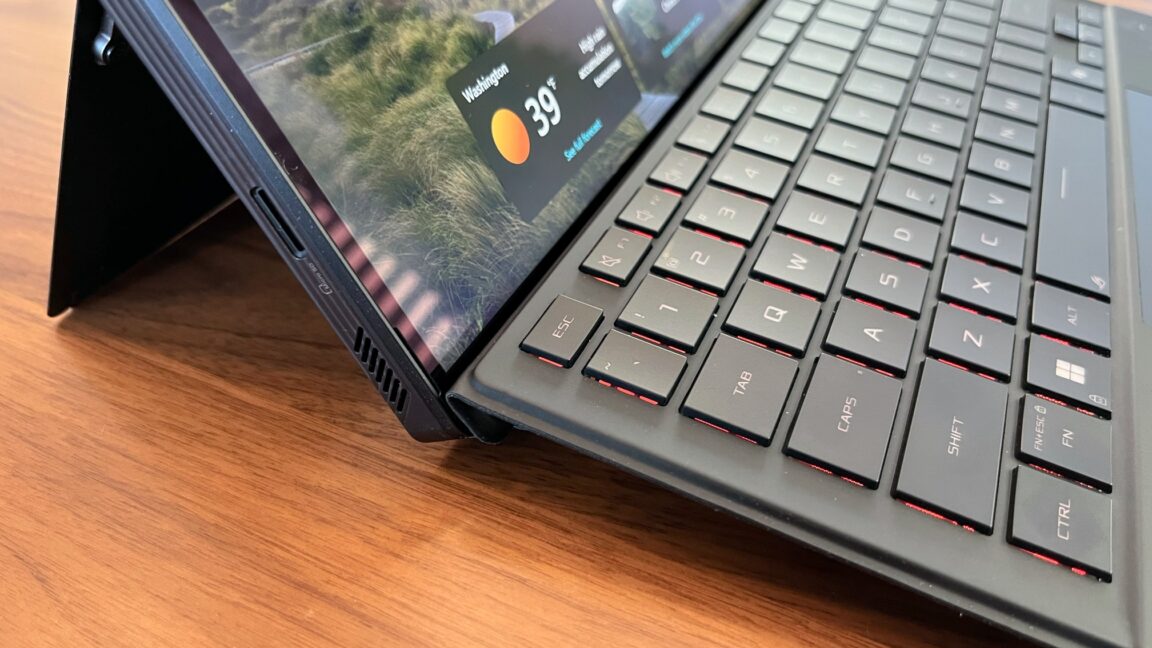On the right side, a USB-A port and headphone jack form a nostalgia nook at the bottom, while the top has buttons for power, volume, and a settings button that opens, by default, a “ScreenXpert” app with shortcuts to mic muting, window layout configurations, and a few other things. I have yet to find a way to remap that button, but I’m sure it’s possible.
Everybody wants to come along for this wild gaming ride.
Credit:
Kevin Purdy
The keyboard and trackpad attach magnetically, and, as with the hinge, these magnets are not playing. Every time I’ve set up the Z13 on a dining room table or the corner of a desk, I’ve had to pry binder clips, pens, or—one time—a cereal spoon away from the bottom. The upside is that your keyboard case will not come loose in your bag. If you prefer to type with a slight upward slope, those magnets can hold the keyboard firmly in place, propped against the bottom of the tablet screen.
The keys themselves have respectable travel (1.7 mm), which is good if you’re going to use them for shooters or other keyboard games. You can backlight them, but not much light shows around the keys at taller angles, and the letters end up being fairly dim. Asus made reasonable sizing changes to the perimeter keys to fit everything, and I didn’t feel cramped typing on the keyboard. The trackpad is somewhere between serviceable and good, with better responsiveness for small gestures than I expected.
I didn’t get to run extensive battery tests on this model, as the firmware changed a few times during my testing period. Asus says the 70 Wh battery is rated for 10 hours, seemingly based on a PCMark 10 “Work Mode” test. You’ll almost always want to use the Z13 while it’s plugged in with a barrel charger for optimal gaming performance, as even the unplugged “Performance” profile pulls between 45 to 71 W in various configurations; “Turbo” wants 60 to 86 W, and you can push it even further with manual configuration.

